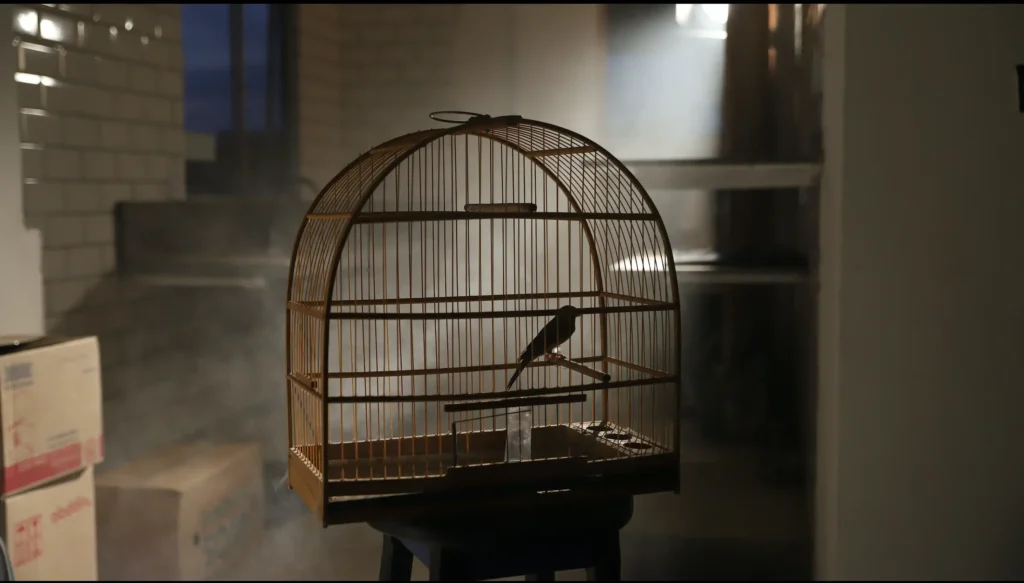Marcelo Lin, director of “Got my pass” (Minas Gerais, 2025), selected for the Brazilian Competition.
In some interviews and texts you mention that “Got my pass” is about freedom in a broad way, allowing for other perspectives on the slums and favelas. After its premiere last month at the Brasília Film Festival, the production will “play at home,” as you joked on Instagram. How do you believe that presenting it at FestCurtas allows the BH audience to reinvent this imaginary, and what feeling do you believe it will generate in the residents of the Aglomerado da Serra, who will see their own reality on screen? Right at the beginning of the film there’s a voiceover of two men talking. It’s a scene that might go unnoticed, but it deeply engages with the idea of freedom—not just physical freedom, but the freedom to dream and to belong to other spaces. One of the voices is mine; the other, that of a young man from the favela. They talk about change: changing houses, routines, or lives. One of them says he doesn’t know what it’s like to change because he’s never left. Many young people from the community never leave their own neighborhood — sometimes not even their own street. This can happen because of involvement with crime, but also because of a feeling that they cannot occupy other spaces in the city. It’s rare to see young people from the periphery frequenting Praça da Liberdade, cinemas, public shows, events like the Virada Cultural, among so many other urban spaces. When we talk about freedom in this film, we want to reflect on the social and structural prisons that hold us hostage within our own territories.
Another central theme of the film is dreams and life projects. Dreaming is often excluded from the daily lives of Black and marginalized youth. And even when the dream exists, the range of possibilities is extremely limited. In the case of the main characters, the desire to be artists appears as one of the few possible options, but as the child understands the world, she realizes that this path was not designed for her. Structure, encouragement, and time are lacking — luxuries that the harsh reality of the periphery almost never allows. The same logic applies to learning another language. In the peripheries, few people speak English or see the language as a possibility for cultural or professional growth. When we have Nayara learning English with the goal of living in another country, the gesture symbolizes something greater: the right to dream. Even when the world wasn’t designed for us, we can — and should — dream. That’s what moves us forward.
In your speech during the Brasília Film Festival, you stated that all your films were made in the Aglomerado da Serra favela and with people who live there. What are the challenges of making and distributing films from the periphery? When I conceived the film, I had one conviction: to portray the favela with dignity, avoiding stereotypes. I believe that cinema is a tool capable of reinventing the imagination and pointing towards where we want to go. Therefore, the first creative decision was to renovate the house. I didn’t want to film just another poorly finished shack, without plaster, without paint, with a poor aesthetic. I invited the designer and architect Marília Gabriela — to whom I dedicate this film — to take care of the architecture and set design. We spent a lot of time on the renovation: plastering walls, painting, tiling, laying the floor. It may seem simple, but it’s not. For someone starting a house from scratch, balancing the basics of eating and having a place to live, this gesture is enormous. Renovating a simple but dignified house is the realization of a dream. It’s materializing a family’s desire for a cozy corner, with plants, where they can rest and receive people.
Another fundamental aspect of my process is making films with minimal resources. Even with financial limitations, it’s essential that the people from the favela are paid for their services and that cinema generates, even modestly, income and professional opportunities. I want cinema to be seen as a real possibility for work and a future. Aesthetically, I look for films that address relevant social and political themes, but that are also popular and accessible. This is a strategy both for audience development and for ensuring that the community — especially those portrayed on screen — see themselves, recognize themselves, and feel proud.
Seeing this community go to the Cine Humberto Mauro for the first time, watching a film that avoids violence and clichés of the periphery, and seeing themselves represented with dignity and cinematic aesthetics — like those productions they watch on streaming — is the most important moment of the entire process. That’s where the cycle closes: the film is ready to conquer the world. It’s the most beautiful way to validate the work and be accountable to those who believed in this dream.
Producing in the Serra region also presents many practical challenges. One of the challenges is coordinating the schedules of everyone involved in the film. Since I work exclusively in film, I can’t shoot only at night or on weekends. Many scenes were filmed during the characters’ vacations or long weekends. The geography of the area also presents obstacles: narrow alleys, tight streets, difficult car access, and the impossibility of setting up large structures. Travel between locations is mostly done on foot—carrying equipment, setting up and dismantling between scenes. In addition, there’s the vibrant sound of the favela. The houses are very close together, and often many people live in one. The favela has a vibrant, diverse sound, especially on weekends. To film, we need everyone’s cooperation, striving for maximum silence — even in interior scenes, which can be affected by this everyday noise.
